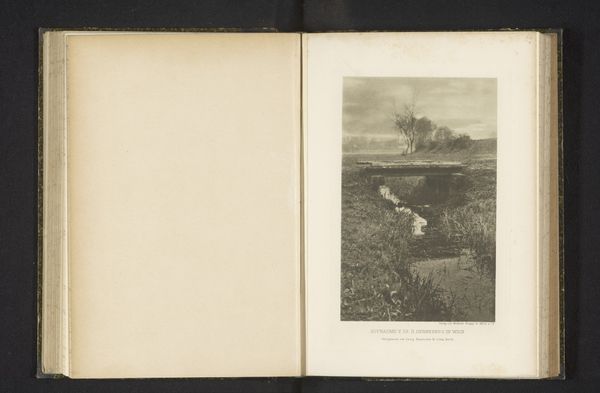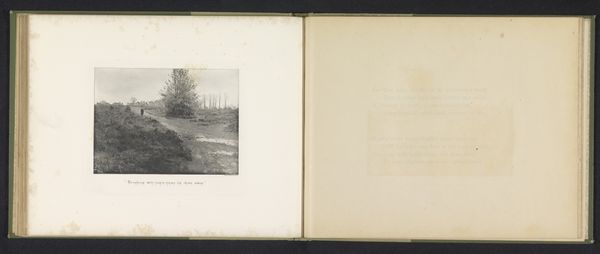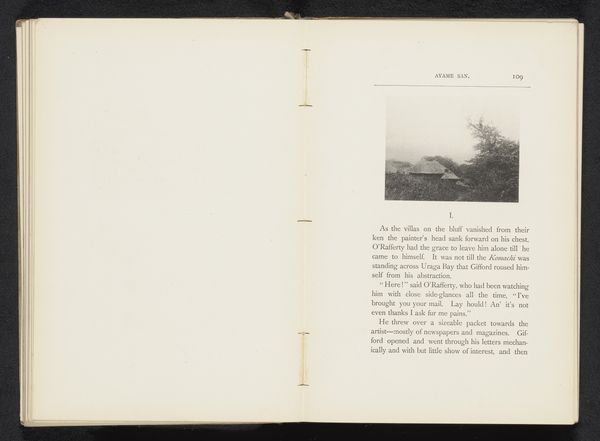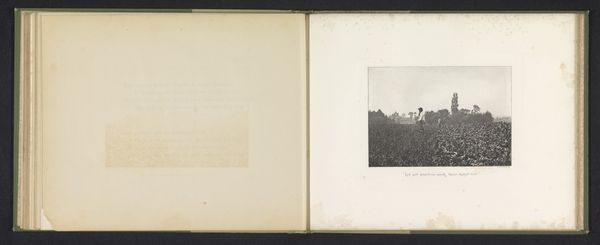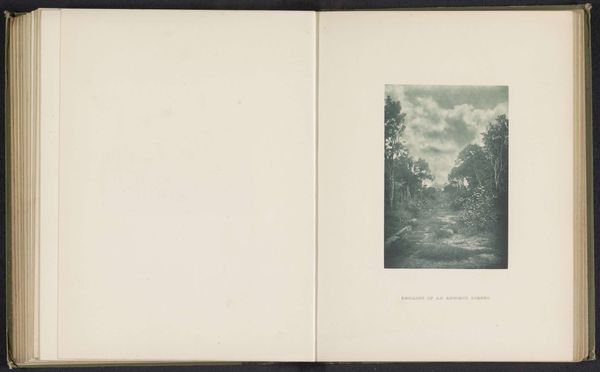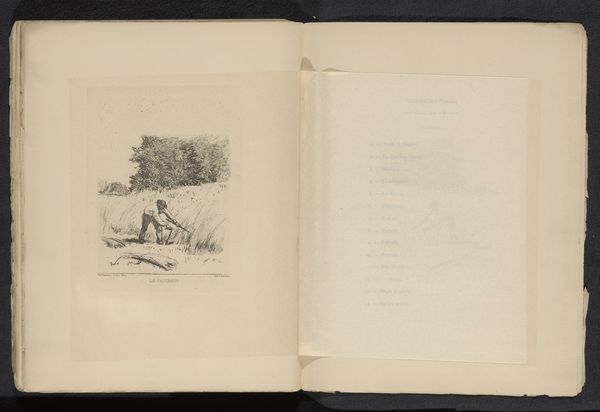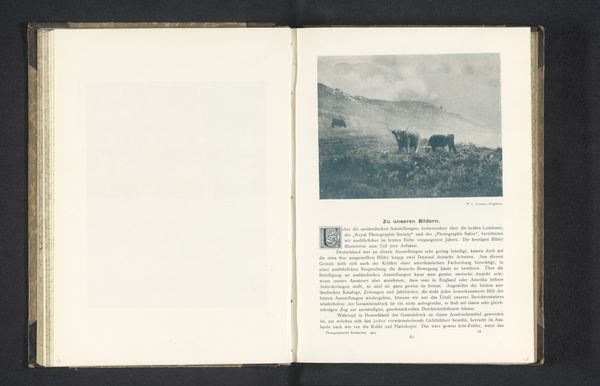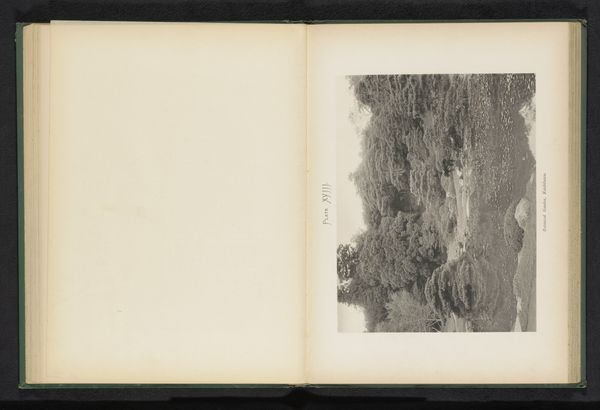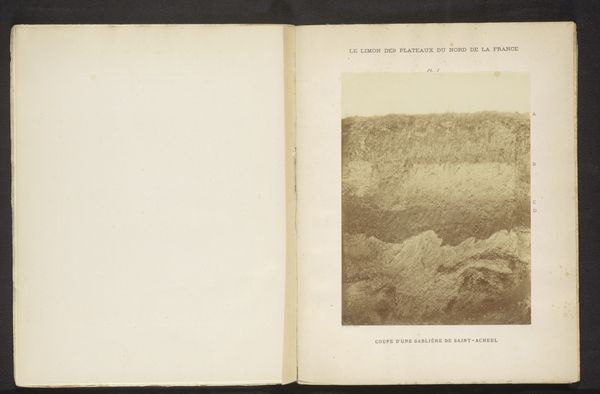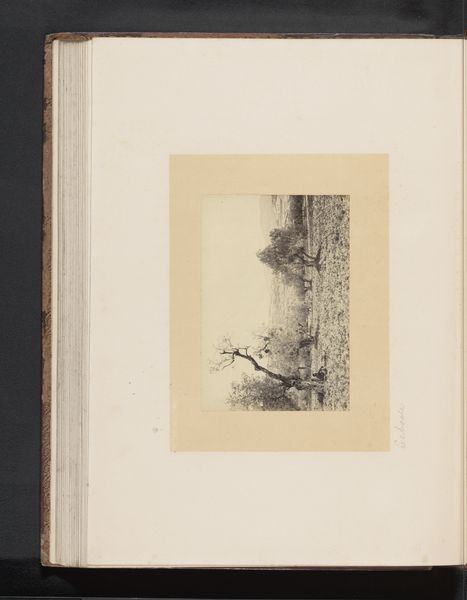
print, etching, photography
#
aged paper
#
homemade paper
#
paperlike
# print
#
etching
#
landscape
#
paper texture
#
photography
#
folded paper
#
thick font
#
paper medium
#
thin font
#
historical font
#
small font
Dimensions: height 155 mm, width 98 mm
Copyright: Rijks Museum: Open Domain
Curator: What immediately strikes me is the near monochromatic palette, the strategic use of light and shadow that articulates depth, almost photographic in its stark realism. Editor: You’ve homed in on the technique. What we’re looking at is “Landschap met een brug over een sloot” or “Landscape with a bridge over a ditch” by Hugo Henneberg. The etching, dating from before 1898, evokes a palpable stillness, a liminal space. It also evokes that sense of pre-war melancholy. Curator: Melancholy, definitely. The composition, too, pulls us into this contemplative mood; the eye is led from the detailed foreground up the gentle slope towards the distant horizon, almost forcing reflection on mortality and impermanence. Editor: Absolutely. But it's not just visual trickery at play. Consider the sociopolitical backdrop. Henneberg, working in the late 19th century, lived during an era of unprecedented industrial growth, rapid urbanization. This landscape offers an escape, an idealization of rural simplicity, perhaps even a critique of the era's values. Curator: I agree, there’s an inherent dichotomy—this etching presents us with the notion of an untouched, even timeless, landscape but its very existence is owed to modern printing techniques and industrial infrastructure. The delicate lines belie this complicated reality. Editor: That contrast is central. And how does it relate to identity? Who is invited to that idealized space? The untouched landscapes often hide untold stories of labour and exclusion. Whose leisure is enabled by that rural vision, and at what cost? Curator: So true! It makes you wonder about the perspective, whose gaze are we seeing this landscape through? I find my mind going to feminist geography and notions of situated knowledge… Editor: We could wander around these socio-political paths forever! I think for me, understanding this piece's place in visual art history lets us interrogate what it means today. Curator: True, and teasing out the social history provides a deeper sense of this artwork's intrinsic value.
Comments
No comments
Be the first to comment and join the conversation on the ultimate creative platform.
